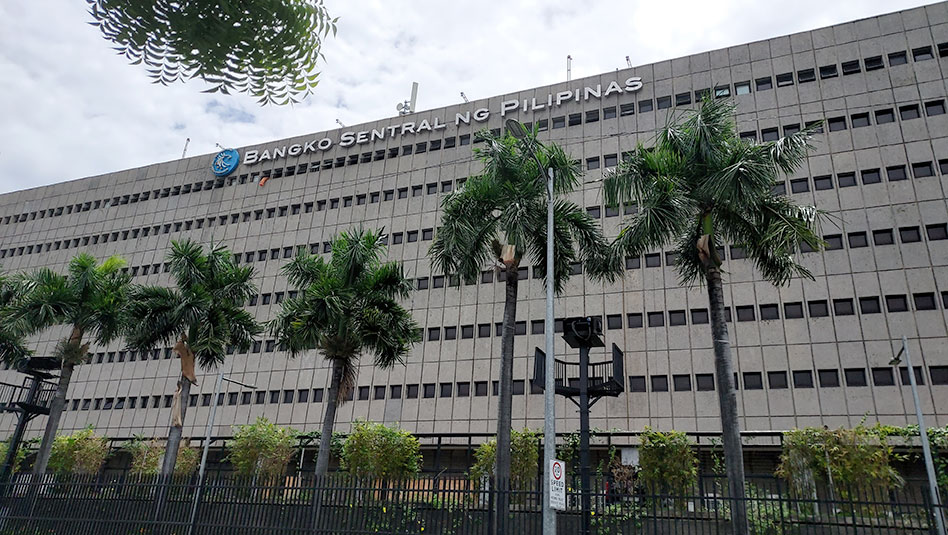




Policy Rate Updates: Closer to BSP’s Goldilocks moment
 DOWNLOAD
DOWNLOAD

Inflation Update: Speeds up but remains below target
 DOWNLOAD
DOWNLOAD

Monthly Economic Update: Fed back on track
 DOWNLOAD
DOWNLOAD


PH banking penetration rate among lowest in region

THE PHILIPPINES’ banking penetration rate was among the lowest in Southeast Asia in 2021, according to McKinsey & Company.
The country had a banking penetration rate of just 56%, based on central bank data, McKinsey said in a May 3 article on its website written by Guillaume de Gantès, senior partner at its Southeast Asia office, Associate Partner Hernan Gerson and Kristine Romano, a partner at its Manila office.
The Bangko Sentral ng Pilipinas (BSP) wants 50% of payments done online and 70% of Filipino adults to have a formal financial account by the end this year.
Latest BSP data showed banked Filipino adults almost doubled to 56% of the population in 2021 from 29% in 2019. The share of digital payments in total retail transactions also increased to 30.3% from 20.1% in 2020.
“The Philippines is one of the fastest-growing economies in Southeast Asia, yet the banking penetration rate ranks among the lowest in the region at 56% versus 96% in Thailand and 88% in Malaysia,” McKinsey said in a separate statement.
“The banking penetration rate remains among the lowest in the region, and traditional financial institutions focus heavily on commercial lending, leaving a rapidly growing, increasingly affluent, and digitally savvy population with little access to financial services that meet their needs,” it said in the article.
Philippine banks are “underinvested” in digital technologies, McKinsey added.
“Traditional banks remain focused on wholesale banking and have been slow to reach new customers outside their existing client base,” it said. “Rural areas are home to nearly half the population, yet rural households are especially underserved, and many have little or no access to brick-and-mortar banking infrastructure.”
Data from McKinsey showed that Philippine banks use less than 10% of their revenues on information technology, lower than the 15% average in the Asia-Pacific region.
Meanwhile, digital channels account for only 5-15% of banks’ revenues, below the average of 25% for other banks in emerging Asian markets, it said.
Most Philippine financial technology firms also “concentrate almost exclusively on payments, and infrastructure constraints limit their reach.”
“The result is a widening gap between the country’s enormous underbanked population and the expanding range of innovative financial technologies lying just beyond its borders,” it added.
McKinsey said the Philippines is working to make the financial sector more inclusive through digitalization.
“Regulators are laying the necessary groundwork for digital financial services and digital-first business models. The sectoral regulator has recently introduced new digital banking licenses, created a real-time payment system, and established a standardized QR network,” it said.
The bankable population in the Philippines is expected to grow by 30% to 85 million in 2030 from 65 million in 2022, McKinsey said.
“In this dynamic environment, new entrants that move swiftly and offer products tailored to the needs of underbanked businesses and consumers, both in urban and rural areas, will be able to establish strong market positions, while latecomers will struggle to stand out in an increasingly crowded field,” it said.
“The rise of a young, tech-savvy consumer base is driving a surge in demand for innovative financial services, leading to the rapid expansion of mobile payments platforms ranging from e-wallets to the digital apps of incumbent banks. Meanwhile, other technology-driven financial subsectors have only begun to emerge,” it added.
However, the public’s lack of information about banking services is a challenge to inclusion, said McKinsey.
“Statutory balance requirements have long since been eliminated, and many banks offer accounts with no minimum balance, yet 45% of unbanked Filipinos believe balance requirements would prevent them from opening an account,” it said.
About 40% of the unbanked also said they lack adequate documentation, based on the BSP’s Financial Inclusion survey, but this is likely an exaggeration, McKinsey said.
Meanwhile, the remaining 15% of the unbanked point to a lack of trust in financial institutions as their chief reason for not opening an account, the BSP’s survey said. — By K.B. Ta-asan
This article originally appeared on bworldonline.com





 By BusinessWorld
By BusinessWorld